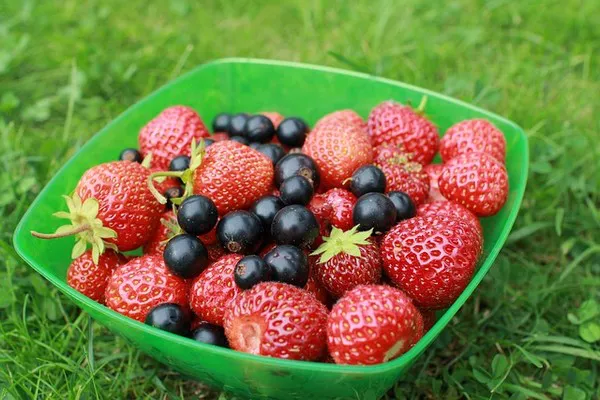Strawberries, with their sweet and succulent fruit, are a favorite among gardeners and fruit enthusiasts alike. Growing your own strawberry plants can be a rewarding endeavor, allowing you to enjoy the freshest and most delicious berries right from your garden. Whether you’re a seasoned gardener or a beginner, this comprehensive guide will walk you through the steps to successfully grow strawberry plants and ensure a bountiful harvest.
Choosing the Right Varieties
The first step in growing strawberries is selecting the right variety for your garden. There are three main types of strawberry plants: June-bearing, everbearing, and day-neutral. Each type has its own unique characteristics:
June-bearing strawberries produce a single, large crop of fruit in late spring or early summer. They tend to have the sweetest and juiciest berries but only produce fruit once a year.
Everbearing strawberries produce two to three smaller crops of fruit throughout the growing season. These varieties are known for their versatility and can be a great choice for continuous harvest.
Day-neutral strawberries produce fruit throughout the growing season and are known for their tolerance to various environmental conditions. They are a good choice if you want to enjoy strawberries from late spring to early fall.
When selecting a variety, consider your climate, available space, and desired harvest schedule. Consult with local gardening experts or nurseries for recommendations on which varieties perform best in your region.
Preparing the Soil
Strawberry plants thrive in well-drained, slightly acidic soil with a pH level between 5.5 and 6.5. Before planting, it’s essential to prepare the soil properly:
Test the soil: Use a soil testing kit to determine the pH level and nutrient content of your soil. Adjust the pH level if necessary by adding lime to raise it or sulfur to lower it.
Remove weeds and debris: Clear the planting area of any weeds, rocks, or debris that could impede strawberry growth.
Amend the soil: Incorporate organic matter such as compost or well-rotted manure into the soil to improve its fertility and structure.
Create raised beds or mounds: To improve drainage, consider planting strawberries in raised beds or mounded rows.
Planting Strawberry Plants
Once your soil is ready, it’s time to plant your strawberry plants. Follow these steps for a successful planting:
Spacing: Place strawberry plants about 12-18 inches apart in rows that are 2-3 feet apart. Ensure proper spacing to allow air circulation and prevent diseases.
Planting depth: Dig holes deep enough to accommodate the plant’s roots, and make sure the crown (the point where the roots meet the stem) is at soil level. Planting too deep or too shallow can affect growth and fruit production.
Watering: Water the newly planted strawberries thoroughly to settle the soil around the roots. Keep the soil consistently moist but not waterlogged.
Mulching: Apply a layer of mulch, such as straw or wood chips, around the plants to help conserve moisture, suppress weeds, and keep the fruit clean.
Caring for Strawberry Plants
Proper care is crucial to ensure healthy strawberry plants and a bountiful harvest. Here are essential care tips:
Watering: Strawberries need consistent moisture, especially during the flowering and fruiting stages. Water deeply but avoid waterlogging, which can lead to root rot.
Fertilizing: Apply a balanced, slow-release fertilizer when the plants begin to grow in the spring. Follow the manufacturer’s recommendations for application rates and timing.
Pruning: Remove any runners (long, horizontal stems) that develop from the plants. This helps channel energy into fruit production rather than vegetative growth.
Pest and disease management: Keep an eye out for common strawberry pests like aphids, slugs, and snails. Use organic or chemical controls as necessary. Additionally, watch for diseases like powdery mildew and gray mold and take preventive measures, such as providing good air circulation and removing infected plants.
Netting or bird protection: To prevent birds from feasting on your ripe strawberries, use netting or bird protection devices as the fruit begins to ripen.
Thin and renovate: After a few years, strawberry plants may become less productive. Thin out older plants and replace them with new ones to maintain a healthy, vigorous bed.
Harvesting and Enjoying Your Strawberries
The moment you’ve been waiting for has arrived – it’s time to harvest your strawberries! Here are some tips for a successful harvest:
Timing: Harvest your strawberries when they are fully ripe. They should be deep red all over and easily detach from the stem when gently pulled.
Morning harvest: Pick strawberries in the morning when they are cool and at their sweetest. Avoid picking when the berries are wet, as this can promote fungal growth.
Gentle handling: Handle strawberries with care to prevent bruising. Use a shallow container to collect your harvest, and avoid stacking or compressing the fruit.
Eat or preserve: Enjoy your fresh strawberries immediately or use them in various culinary delights. You can also preserve them by freezing, making jam, or dehydrating.
Conclusion
Growing strawberry plants can be a gratifying and delicious experience for gardeners of all levels. With the right variety selection, proper soil preparation, and diligent care, you can enjoy a bumper crop of sweet, succulent strawberries from your garden. Remember to adjust your practices based on your specific climate and local conditions, and don’t hesitate to seek advice from experienced growers or gardening resources in your area. Happy strawberry growing!


